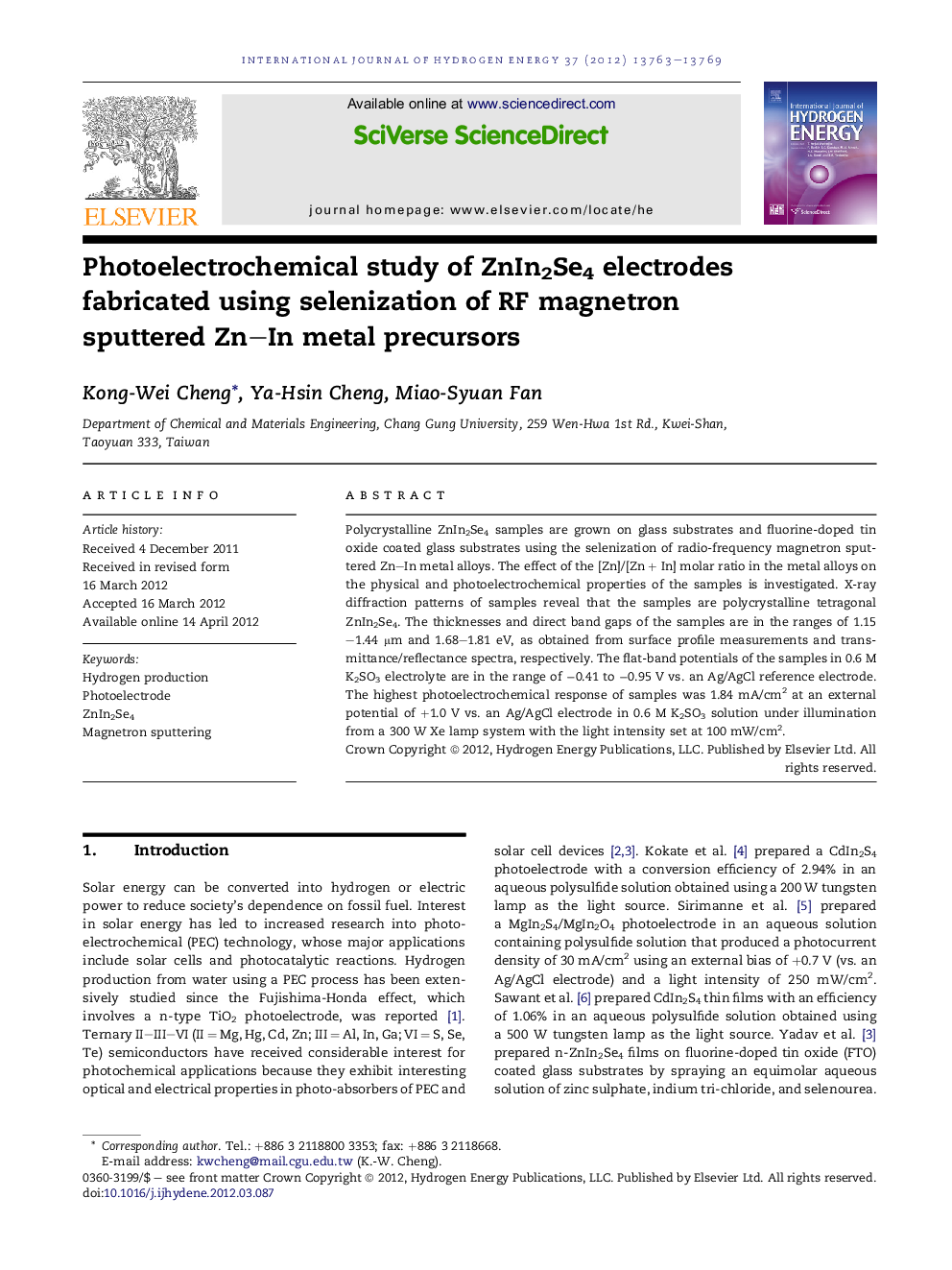| Article ID | Journal | Published Year | Pages | File Type |
|---|---|---|---|---|
| 1282281 | International Journal of Hydrogen Energy | 2012 | 7 Pages |
Polycrystalline ZnIn2Se4 samples are grown on glass substrates and fluorine-doped tin oxide coated glass substrates using the selenization of radio-frequency magnetron sputtered Zn–In metal alloys. The effect of the [Zn]/[Zn + In] molar ratio in the metal alloys on the physical and photoelectrochemical properties of the samples is investigated. X-ray diffraction patterns of samples reveal that the samples are polycrystalline tetragonal ZnIn2Se4. The thicknesses and direct band gaps of the samples are in the ranges of 1.15–1.44 μm and 1.68–1.81 eV, as obtained from surface profile measurements and transmittance/reflectance spectra, respectively. The flat-band potentials of the samples in 0.6 M K2SO3 electrolyte are in the range of −0.41 to −0.95 V vs. an Ag/AgCl reference electrode. The highest photoelectrochemical response of samples was 1.84 mA/cm2 at an external potential of +1.0 V vs. an Ag/AgCl electrode in 0.6 M K2SO3 solution under illumination from a 300 W Xe lamp system with the light intensity set at 100 mW/cm2.
► ZnIn2Se4 is deposited on substrates using selenization of of Zn–In precursors. ► All samples are polycrystalline tetragonal ZnIn2Se4. ► The direct energy band gaps of the samples were in the range of 1.68–1.81 eV. ► Sample with [Zn]/[Zn + In] ratio of 0.24 has a maximum PEC response.
